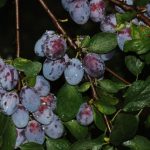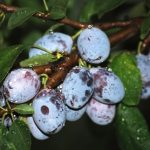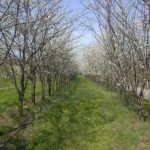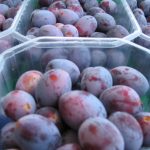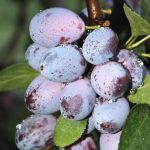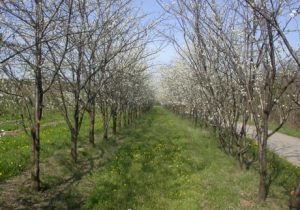
Name
Ramassin of Saluzzo
Seal of quality

Prodotto Agroalimentare Tradizionale (PAT) – Typical Food Farming Product.
Description
The Ramassin del Saluzzese is a part of the group of the so-called “Siriache”, originally from Syria. When ripe, this small fruit is a purplish blue and tends to fall to the ground when ripe. Therefore, this characteristic enables the Ramassin plum to be picked up from the ground, only when it has reached full ripening, and is sold without any quality, size or weight classification. It is traditionally sold not by weight but by the “palot”, i.e. a certain quantity for each small shovel of plums. Apart from its small size, it differs from the usual plums in its sweetness and its aromatic qualities for which it is unmistakable. It is an extremely simple species in need of little care and with no particular phytosanitary requirements.
There has never been a really true selection of the different species, but two extractions at least can be identified:
- the early variety, ripening 8/10 days in advance, considered a real gem by the owners, for which it is not reproduced elsewhere;
- dark violet-coloured with a characteristic and precious velvety skin, grown at altitudes ranging from 300 to 500 metres a.s.l.
Apart from being eaten raw, which is how it is mainly eaten, the Ramassin is usually eaten cooked, in syrup or as jam.
Area of production
The Ramassin is cultivated in the Saluzzo area, especially in the hilly regions. The area that boasts the highest concentration of this plum is the Valle Bronda, where the Consortium “Ramassin del Monviso – Valle Bronda” has been founded and which gathers producers from the communes of Brondello, Castellar, Pagno, the hilly area of Saluzzo and the crop areas of the Comunità Montana Valle Po, Infernotto and Valle Varaita.
History
This cultivation is so old that there is no specific documentation, but only accounts of its cultivation in Saluzzo’s local archives. The Arab etymology of the word Ramassin, which indicates the capital of Syria, Damascus, seems to lead the introduction of the species back to the period of the Saracenic invasions or to the Holy Land and the crusades.
In Piedmont, cultivation initially spread thanks to the Benedictines who came to the hilly areas of Turin and Chierese area from France , and the species spread to the Saluzzo area only some time later. Valle Bronda became an important productive and trading centre as regards the Ramassin, to such an extent that in the harvest period, two markets would be held every evening entirely dedicated to this plum: one in Pagno and the other in Frazione di San Lazzaro, Saluzzo.
In 2006, a number of fruit growers set up the “Consorzio di promozione e valorizzazione del Ramassin del Monviso – Valle Bronda”.
